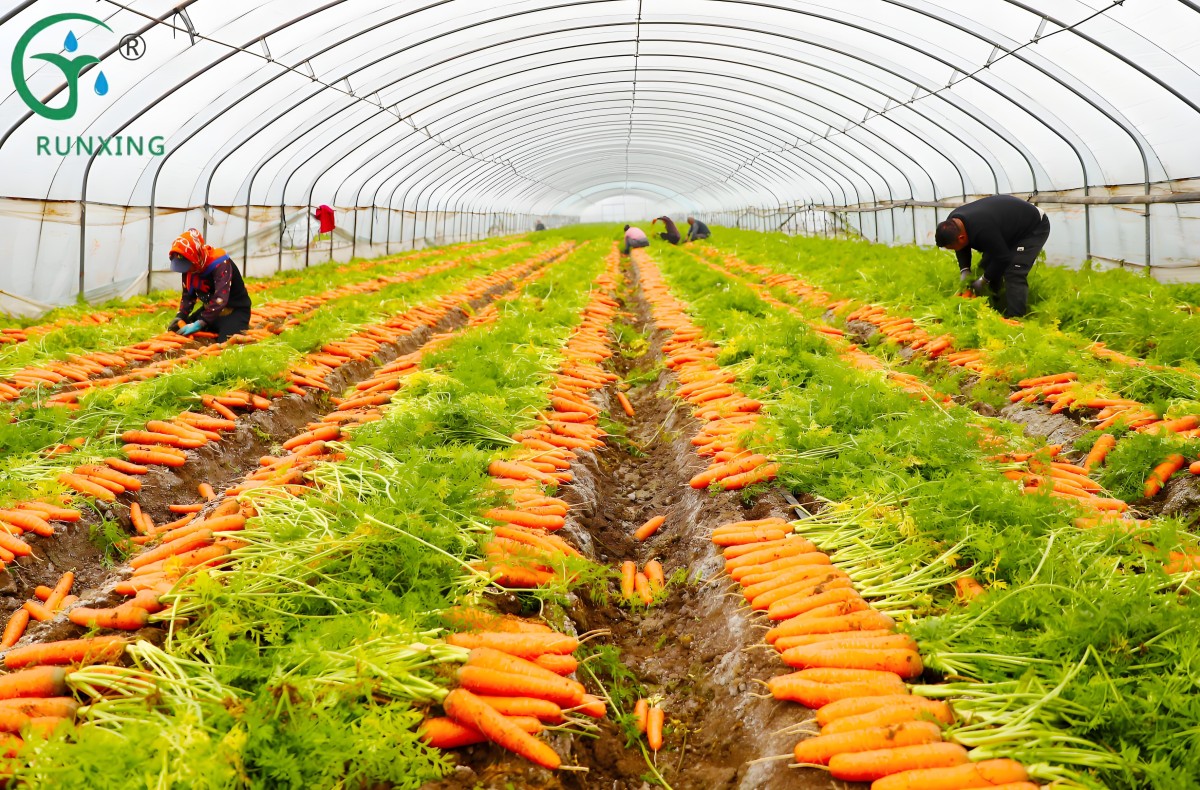Colombia Carrot Cultivation and the Necessity of Drip Irrigation Systems
In the diverse climatic conditions of Colombia, carrot cultivation indeed necessitates efficient and precise irrigation methods, with drip irrigation systems being the ideal choice to meet this demand. This article will provide a detailed introduction on why carrot cultivation in Colombia requires drip irrigation systems, the necessary drip irrigation equipment and its installation methods, water usage control, as well as carrot cultivation tips and precautions.

I. Why Does Carrot Cultivation in Colombia Require Drip Irrigation Systems?
Colombia's climate is varied, but carrots, as crops with developed root systems and long growth cycles, have high demands for water and nutrients. Traditional irrigation methods such as flooding irrigation not only waste water resources but also lead to nutrient loss and soil compaction. Drip irrigation systems can achieve precise irrigation, delivering water and nutrients directly to the vicinity of the crop roots, improving water and fertilizer utilization efficiency, reducing the occurrence of pests and diseases, and lowering labor costs.
II. What Drip Irrigation Equipment is Needed?
Drip irrigation equipment primarily includes drip irrigation tapes (or pipes), drippers, filters, fertilization devices, water delivery pipes, and pumps.
Drip Irrigation Tapes (or Pipes): Choose drip irrigation tapes embedded with flakes or columns, which have uniform flow rates and good anti-clogging performance.
Drippers: Select drippers suitable for the carrot growth stage and soil conditions, such as pressure-compensating drippers for long-distance or uneven terrain installations.
Filters: Screen filters or disc filters are used to remove impurities from the water to prevent clogging of drippers.
Fertilization Devices: Differential pressure fertilization devices, Venturi fertilization devices, or fertigation pumps are used to inject soluble fertilizers into the irrigation system.
Water Delivery Pipes and Pumps: Choose appropriate water delivery pipes and pumps based on the cultivation scale and field conditions to ensure stable operation of the irrigation system.
III. How to Lay and Install Drip Irrigation Equipment?
Design the Irrigation System: Design the irrigation system based on the carrot cultivation scale, field conditions, and water source, including the layout of pumps, filters, fertilization devices, water delivery pipes, and drip irrigation tapes.
Install Equipment: Install the equipment according to the design drawings, ensuring the system layout is reasonable, installation is firm, and sealing is good. Pay special attention to the installation direction of filters to avoid reverse use.
Debug the System: After installation, perform debugging to check for leaks, clogs, and ensure normal irrigation and fertilization functions.
IV. How Much Water is Needed and How to Control It?
About 1,500 to 2,000 cubic meters of water are needed for drip irrigation of one hectare of carrots. The amount of water used varies with factors such as variety, growth stage, climate, soil, and irrigation method.
Determine Water Usage: Adjust the irrigation plan flexibly based on the carrot growth stage and weather conditions to ensure adequate but not excessive water supply.
Control Irrigation Amount: Achieve automatic irrigation through the timer or controller of the drip irrigation system, precisely controlling the irrigation amount according to soil moisture and crop demand.
Monitoring and Maintenance: Regularly check and maintain the drip irrigation system to ensure its normal operation and avoid issues such as leaks and clogs.
V. How to Better Cultivate Carrots?
Select High-Quality Seeds: Choose high-quality carrot seeds suitable for the local climate and soil conditions to ensure germination rate and growth potential.
Reasonable Planting Density: Plant carrots at a reasonable density based on the variety and growth habits to avoid overcrowding or undersowing that affects yield and quality.
Scientific Fertilization: Fertilize reasonably according to the carrot growth stage and nutrient requirements, adopting drip irrigation and fertigation technology to improve fertilizer utilization efficiency.
Pest and Disease Control: Combine physical, biological, and chemical control methods to control the occurrence of pests and diseases, reducing pesticide usage.
Soil Management: Improve soil structure through deep tillage and loosening, reasonable crop rotation, and other measures to enhance soil fertility and air permeability.
VI. Carrot Cultivation Tips
Water Control Management: After carrots develop four leaves, enter the water control period, controlling watering for 5 to 10 days based on soil conditions to promote root development.
Reasonable Watering: After the water control period, begin watering and fertilizer flushing, keeping the soil moist but not too wet to avoid root rot due to excessive water.
Regular Weeding: Regularly weed to keep the field tidy and orderly, reducing competition between weeds and carrots.
Timely Harvest: Harvest carrots based on their growth cycle and maturity to ensure yield and quality.

By implementing the above measures, the advantages of drip irrigation systems in carrot cultivation in Colombia can be fully leveraged, promoting the sustainable development of the carrot industry.
If you have any needs, please contact us.
About Us
We are dedicated to offering innovative, water-saving, and labor-saving irrigation solutions for agriculture worldwide. Our focus on quality and continuous innovation drives the development and progress of the industr
LOGO
This stunning beach house property is a true oasis, nestled in a serene coastal community with direct access to the beach.
Opening Hours
Monday - Friday : 9AM to 5PM
Sunday: Closed
Closed during holidays
Contact
+18888888888
hezuo@eyingbao.com123 West Street, Melbourne Victoria 3000 Australia
